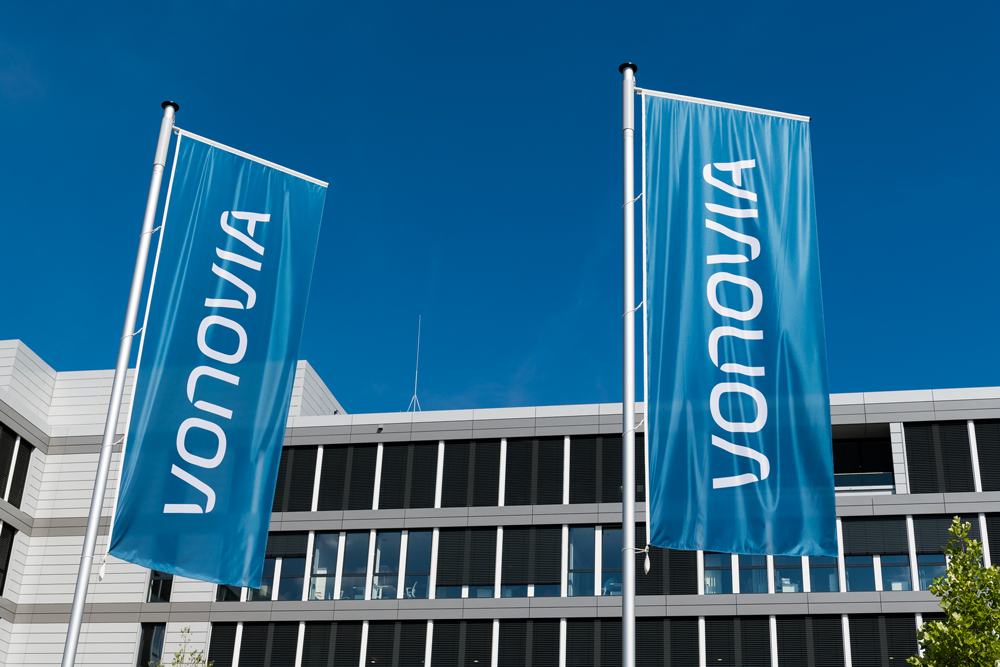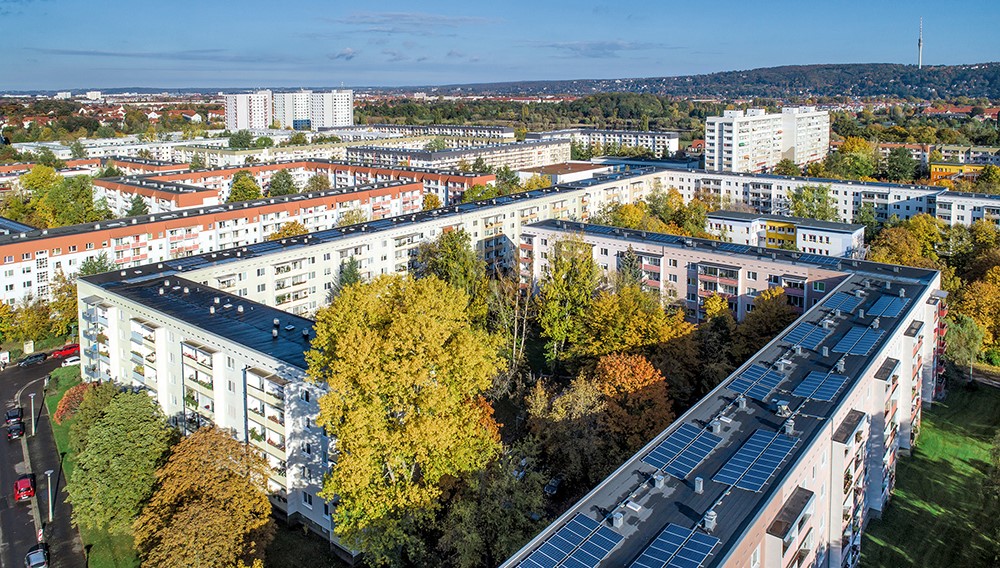Appeal on the Capital Market
The construction and management of residential real estate is a business with a long-term focus. Our aim in this segment is to bring economic activity hand in hand with environmental benefit, living up to the various expectations of stakeholders. We are committed to the principles of the social market economy and profitability Economic success is the prerequisite for further investments in environmental and social sustainability. At the same time, we firmly believe that these investments also pay off in terms of our appeal for investors. Growing demand for sustainable financial products and the ever greater establishment of ESG criteria as a basis for investment decisions prove us right.
Communication with our stakeholders on the capital market is handled by the Investor Relations (IR) division in consultation with the Management Board. Transparency is the watchword here. It is important to us to provide relevant information on our company and our economic development, but also on the sustainable direction of Vonovia, thereby providing an accurate picture of Vonovia. We want to generate attractive risk-adjusted rates of return for our investors and achieve sustainable revenue and value increases. This strengthens trust in the Vonovia brand. At the same time, IR acts in an inward-facing way so that the topics communicated to us by capital market actors come to the attention of the right people within the company.
Through formats such as investor conferences and roadshows, we seek out dialog – including and especially on ESG topics – with our shareholders and potential investors. We continue to hold these events during the coronavirus pandemic, albeit mainly in virtual form. Our Annual General Meeting, for instance, was for the second time held virtually in April 2021. Face-to-face conversations, additional roadshow dates and the participation in investor conferences represent additional communication channels.
We continue to attach considerable importance to a broad range of financial instruments from which we can select the right product at the right time, e.g., bonds, promissory notes, secured real estate loans, commercial papers, working capital facilities and subsidy loans from KfW and EIB. The portfolio is rounded off with innovative financing sources such as a tokenized promissory note. This enables us to communicate with different capital market actors, such as investors, banks and insurers.
We expanded our portfolio in 2021, for instance, with the issue of a green bond, which systematically supplements and continues our sustainability strategy. Through the success of this additional financing option, we feel strengthened in the continued development of our sustainable projects, especially in terms of the goal of a climate-neutral building portfolio. In 2022, we will revise our Green Bond Framework, taking into account the EU taxonomy, and add social components in order to be able to issue social/sustainability bonds.
In 2021, we achieved excellent results across the board in all ESG ratings relevant for Vonovia and its investors, achieving benchmarks and improving further in some cases. As such, we were able to maintain our membership of the prestigious Dow Jones Sustainability Index Europe and ISS-ESG Prime Status. In the ESG Risk Rating of Sustainalytics, Vonovia was (as of December 9, 2021) one of the top 25 companies in the entire universe evaluated of some 15,000 companies worldwide, as well as one of the top three performers in the real estate sector (of 1,054 companies).
Material Performance Indicator – Performance in Relevant ESG Ratings
Material Performance Indicator: Performance in relevant ESG Ratings | |||||||||
Vonovia | |||||||||
Ratings | 2020 | 2021 | Deutsche Wohnen 2021 | ||||||
Sustainalytics ESG risk rating | 7.7 | 6.7 | 12.2 | ||||||
MSCI ESG | A | A | AA | ||||||
CDP Climate Change | B- | B | x* | ||||||
ISS ESG | C | C | C | ||||||
S&P Global CSA | 57 | 68 | x* | ||||||
- *Due to the acquisition of Deutsche Wohnen by Vonovia, active participation was dispensed with for the reporting year.
In 2022, we will once again pursue the goal of transparently presenting our sustainability performance to the capital market and achieving consistently strong evaluations in ESG ratings. As well as performing regular checks to see whether we are listed in the relevant indices, we also use the results of the rating process and peer group comparisons to further develop our sustainability measures in a targeted manner.
Within the company, the Sustainability/Strategy department is responsible for actively managing our participation in ESG ratings, involving the operating departments in this process. The Investor Relations department and the Sustainability/Strategy department report to the CEO. Decisions regarding ESG ratings are made in the sustainability committee, which also receives regular information on developments in this area. The Finance & Treasury department, which reports to the Chief Financial Officer (CFO), is responsible for the implementation of our financial instruments.



